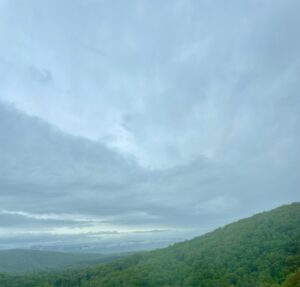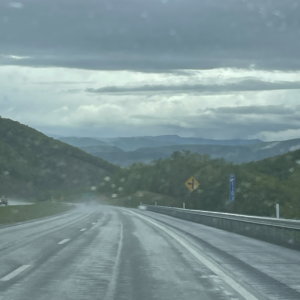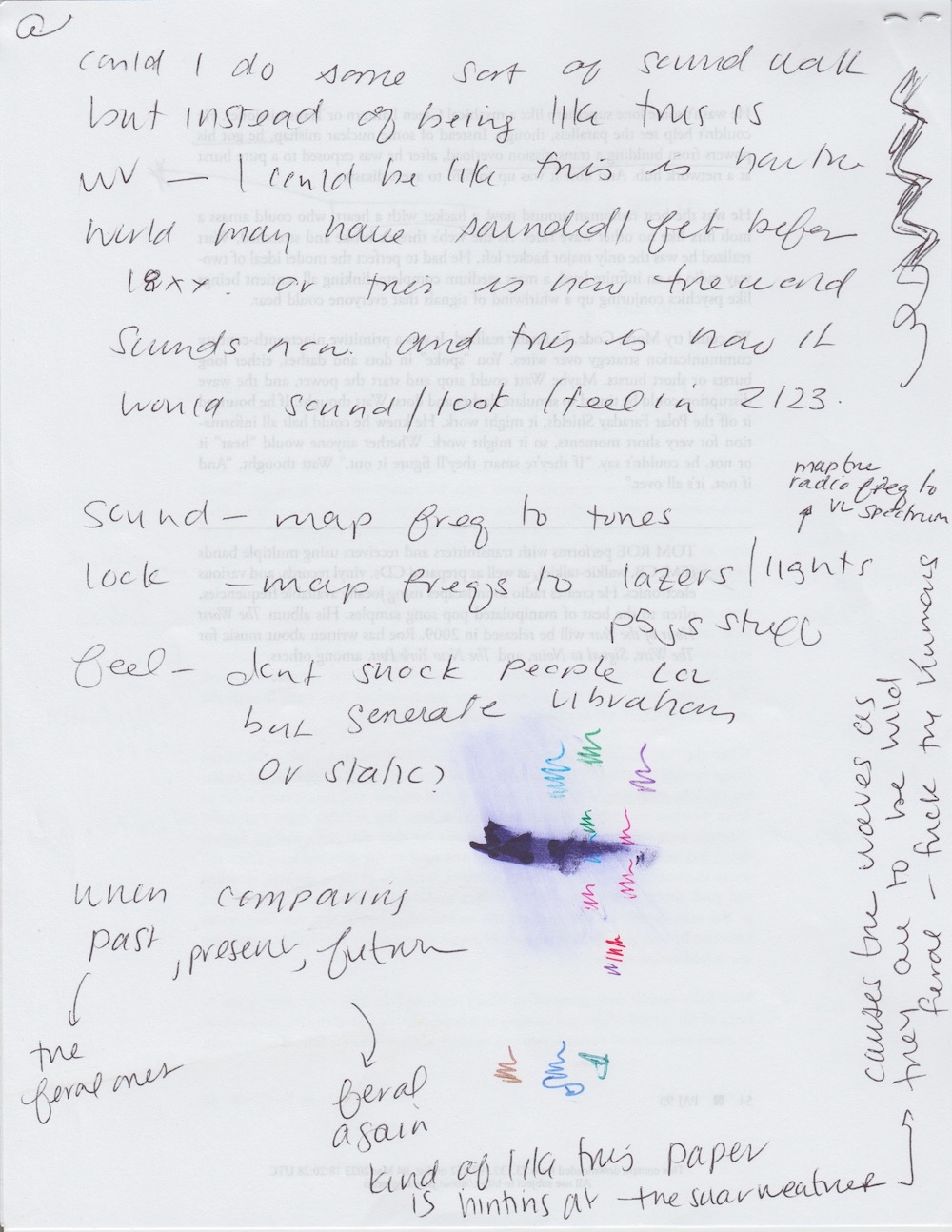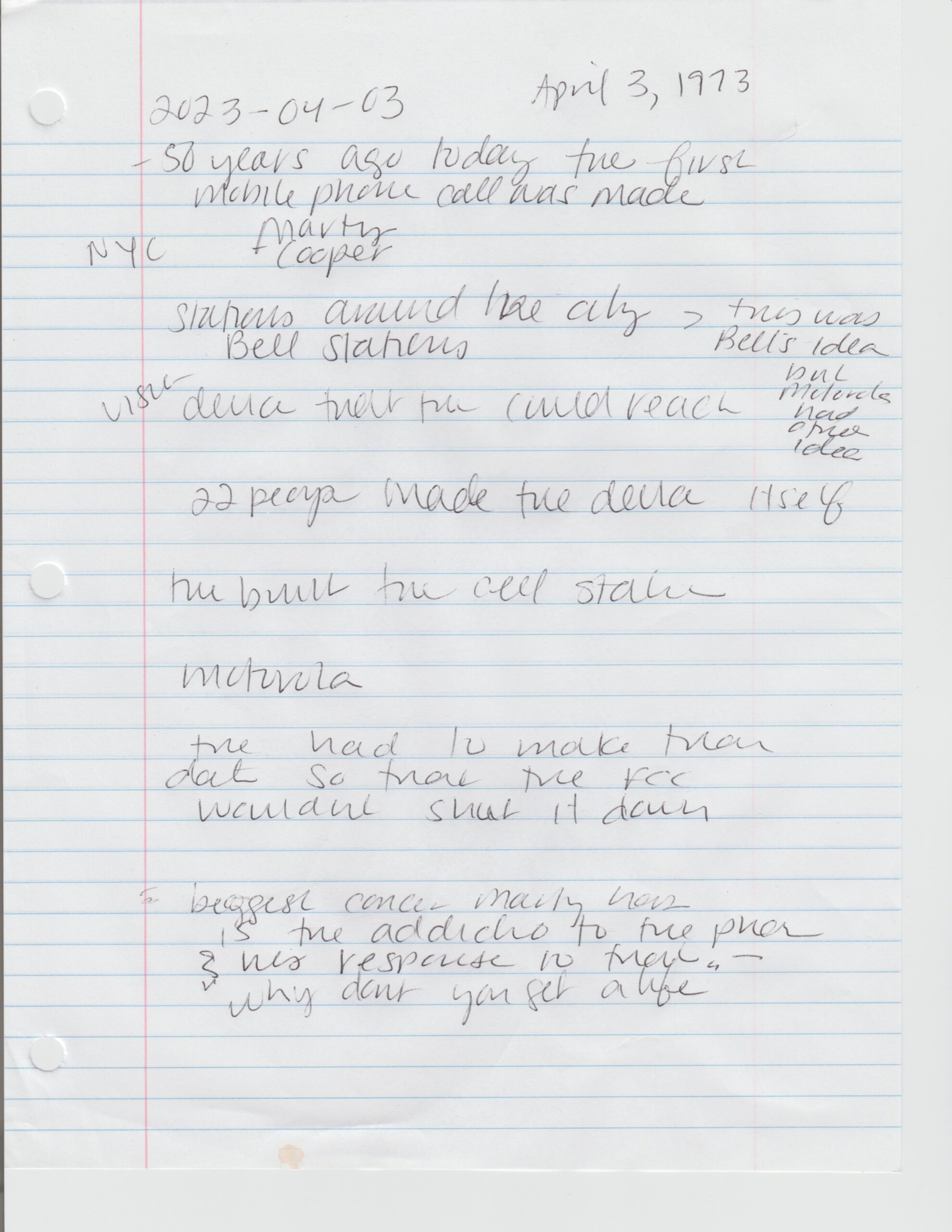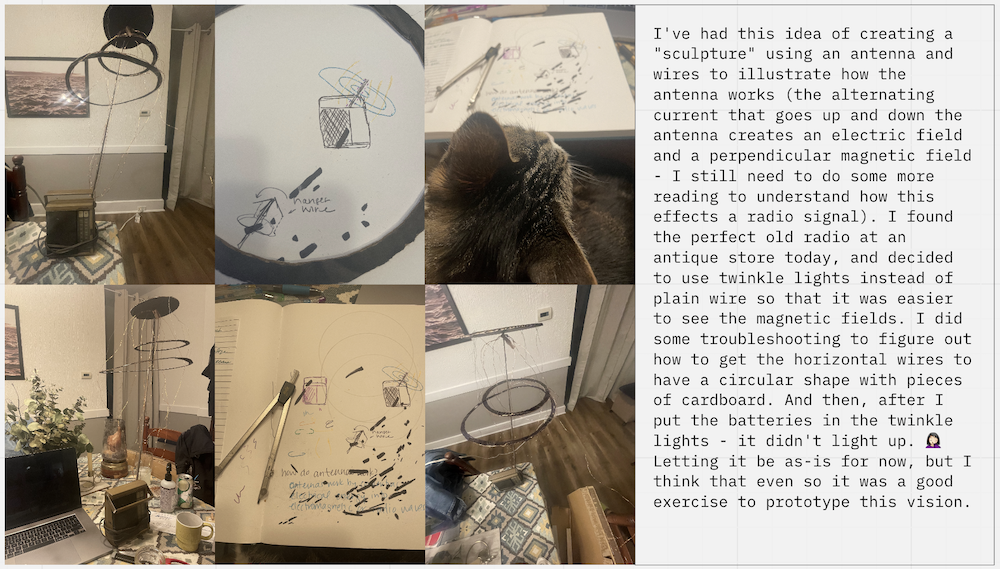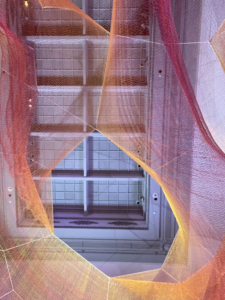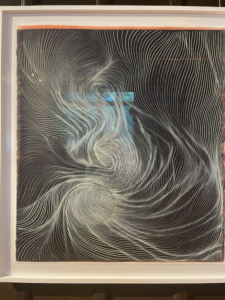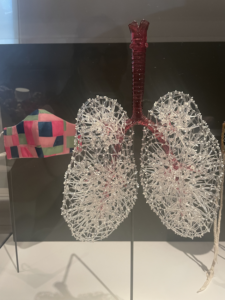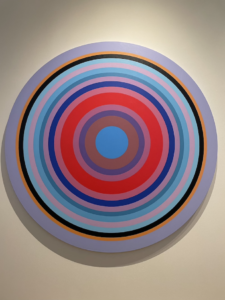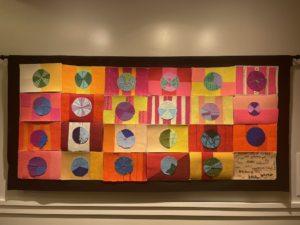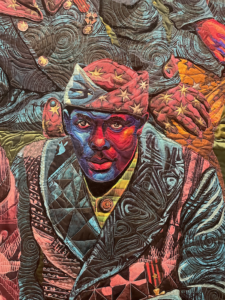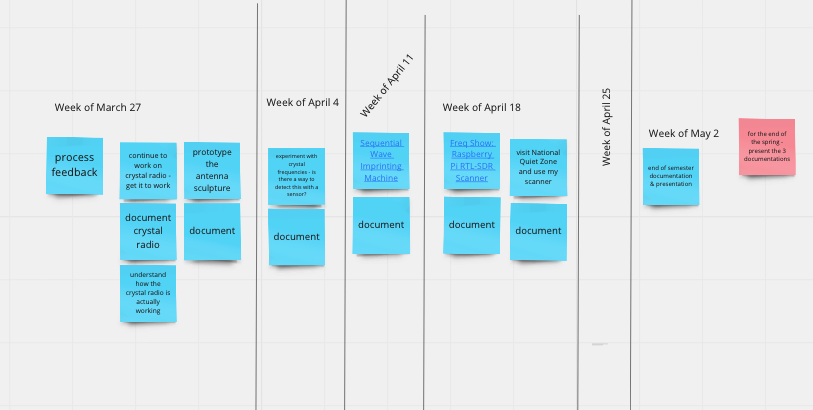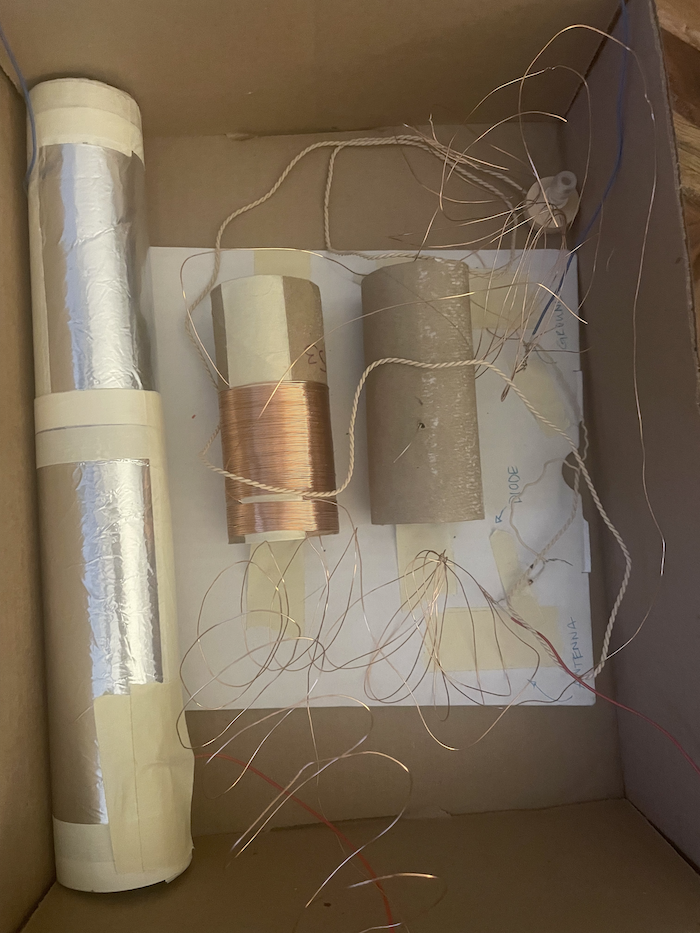2023-04-22 -> 04-23: The Quiet Zone
US National Radio Quiet Zone
A couple of weekends ago my trip to the US National Radio Quiet Zone in Green Bank, WV. My mom agreed to go with me to help me out with the almost 5-hour-long drive, keep me company, and have a little adventure. This was great news because leading up to the weekend I was feeling a little stressed because I didn’t feel prepared, and was hoping to do some work in the car on the way to West Virginia. A big part of the reason I wanted to visit the Quite Zone was to collect data. I have been hoping that I could find some sort of data to collect that I’d be able to use to compare the Quiet Zone, with where I am currently located in Pennsylvania. The problem was I hadn’t quite figured out what sort of data I wanted to collect, and how. I had been playing with my software-defined radio dongle and could tune into certain radio stations, but I didn’t know how to get data out of CubicSDR into a raw format.
I had been thinking that I would work on this adafruit tutorial to create a radio scanner and hoped that along the way I’d figure out how to get the sort of data I was looking for. In hindsight, I think that I was hoping to gather the signal strength of frequencies within a certain band. The funny thing is, my hypothesis was that I would get very weak or nonexistent signals in the Quiet Zone, so I was basically hoping to get readings that showed the lack of data.
Halfway through the journey to Green Bank, we switched drivers, so I could start trying to figure out how to collect what I needed with my software-defined radio. Driving through the mountains of West Virginia, in the rain, with my laptop open and a weird antenna (my rtl-sdr dongle) sticking out I felt like a storm chaser. It felt like adventure.
Before I left I had played around with my raspberry pi and got the operating system installed. But one thing I didn’t account for was how I was going to ssh into the pi from my laptop on the road – I didn’t have an ethernet cord so I couldn’t get the pi on the same network as my computer (which was using my phone’s hotspot). Shoot. It occurred to me then, that I didn’t really need to create the full radio scanner in the tutorial to get data readings from the SDR – I just needed a way to interact with dongle, and save that data. I started digging into the tutorial a bit more, and that’s when it hit me – they must be using some sort of code package! I found the github repository that the tutorial is based on, and sure enough, they are using a python lib called rtlsdr. Just as I was really starting to make some progress, my internet connection slowed to a crawl. We weren’t even in the Quiet Zone yet, but the mountains seemed to affect the radio waves making their way to my phone as cellular data, which was powering my Google search. I decided to put my computer down, and just enjoy the scenery.
My dad had printed out directions from the hotel to the observatory for my mom before we left – he was worried we weren’t going to have cell service and wouldn’t be able to use the navigation on our phones. Lucky for us, because sure enough, we lost cell service and when I closed my maps app, we lost our directions in the middle of a curvy country road! I was able to reverse the directions that my dad had printed and realized that we were going to pass the Green Bank Observatory on the way to our hotel. As we came closer to the observatory, you could see the telescopes sitting there in the middle of the green of the mountains – so out of place, and almost otherworldly. We decided to stop and check it out in daylight hours, even though we had planned to go back that evening for an event at the observatory called the star party.
As we were pulling up, I realized that I was pretty unprepared for this whole trip. I didn’t really even know what I was going to do at the observatory, or what sort of visitor experience they offered. We walked in and discovered that they had a small exhibit and a bus tour. Seeing how small the visitor’s center was, I was a bit disappointed at first, to be honest. Did we drive all this way, just to see a little science center? But when I walked in, I was instantly SO EXCITED. We decided to do the bus tour to get out closer to the antennas, and while waiting, we looked at the exhibits. In the exhibition, there were several pre-teen kids pulling their parents around telling them how cool the different interactive exhibits were. And then there was me, in my late thirties, doing the exact same thing! Having this experience of being pulled back into the wonder that children feel when they learn about science was almost like an epiphany for me. It helped me explain to my mother what I was even doing in this program. I want to be able to create something that makes these invisible things (the electromagnetic spectrum) more tangible. My mom finally got it. I finally realized that though creating educational tools for kids isn’t necessarily the core driving force of this work, it is a good benchmark. If I’m able to create something that can make kids feel and understand something invisible, hopefully, I’ll also have gotten that same understanding myself.
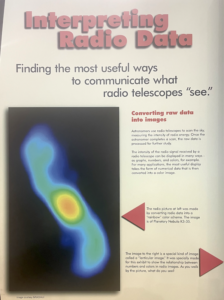



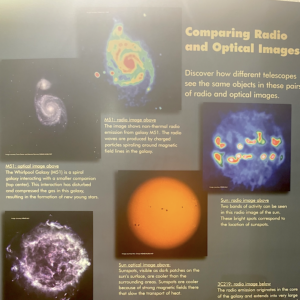
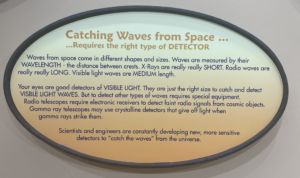
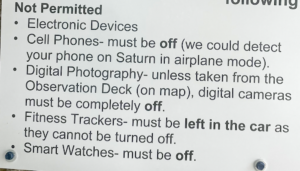
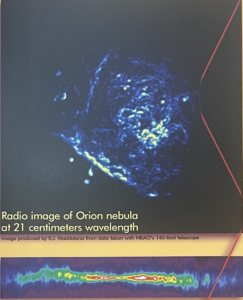
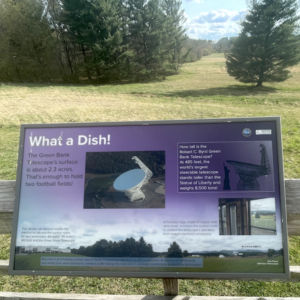
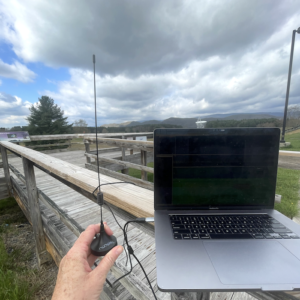
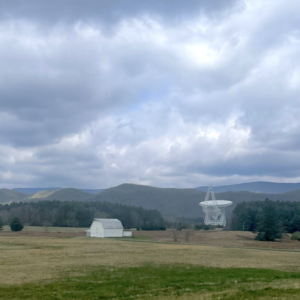
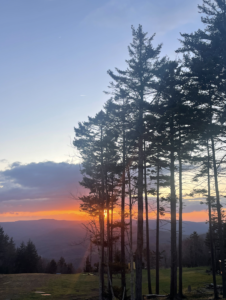
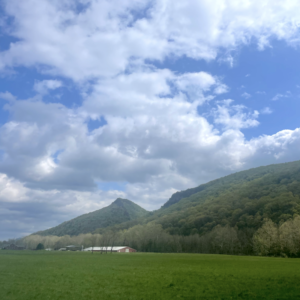
A couple of super cool things we learned:
- The Greenbank observatory has an array of antennas that are waiting just to observe Fast Radio Bursts – these are radio signals that are observed periodically and scientists don’t really know where they come from. They’re very quick and powerful and happen sporadically without a pattern. Based on their wavelength, scientists think that they aren’t manmade (or alien-made
), but are natural phenomena.
- The observatory is in Greenbank because they wanted to create the facility in a valley where they would have natural protection from stray radio frequencies from the mountains, and that is close-ish to Washington, DC.
- There are several groves of densely packed white pine trees on the campus because white pine needles are good at absorbing radio waves! I just found this article too, talking a bit more about this phenomenon, so cool!
 Class Playlist
Class Playlist 